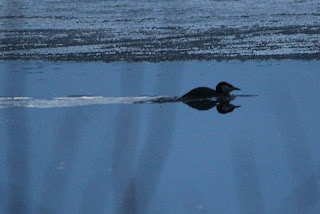First time out with the new camera. Dinner with friends in south Anchorage, so after we went to Potter Marsh.
Indulge me. This all was between 10:30pm and 11pm, so it was getting dark and when I saw that some of these were as slow as 1/15 of a second, I wasn't so disappointed with the results. Not as sharp as they should be, but a promising start. Think of what the camera will do when the
sun's out.
From Cornell Lab of Ornithology:
The Red-necked Grebe breeds on small inland lakes in Canada and Alaska, and winters along both coasts of North America. Boldly marked, vocal, and aggressive during the breeding season, it is quiet and subtly attired in winter.
There was a pair that ran atop the water, but they were too far away.
And the muskrat.
From National Trappers:
"Muskrats are somewhat sociable with others of the same species, but will often fight to the death as populations become dense. Preferred foods include a variety of vegetation, including roots, stems, and buds. Muskrats often seek out undercut banks for protection while feeding. Food is usually carried by this furbearer by mouth, and eating takes place above the water level. Muskrats are often active during the day, as well as night, with peak activities near dawn and dusk. Muskrats commonly stay underwater for five minutes while searching for food and they are capable of holding their breath underwater for 10-12 minutes."
The muskrat is hard to see (it's the brown lump in the water in the middle), but I thought reflection and ripples made it worth posting.








Lovely. I esp. like the last one -- such a strange illusion of water curving over the edge, not falling. :)
ReplyDelete